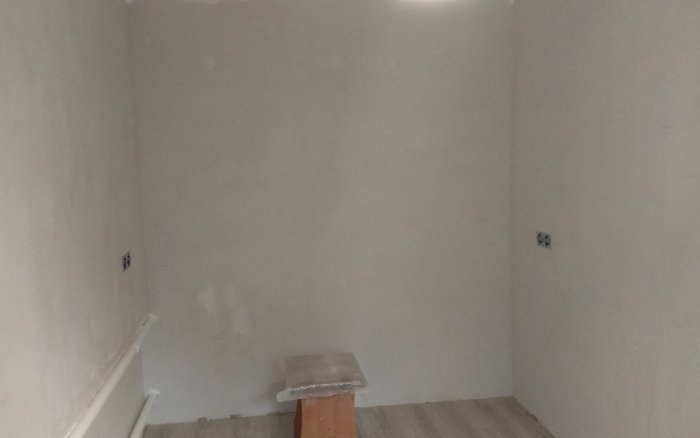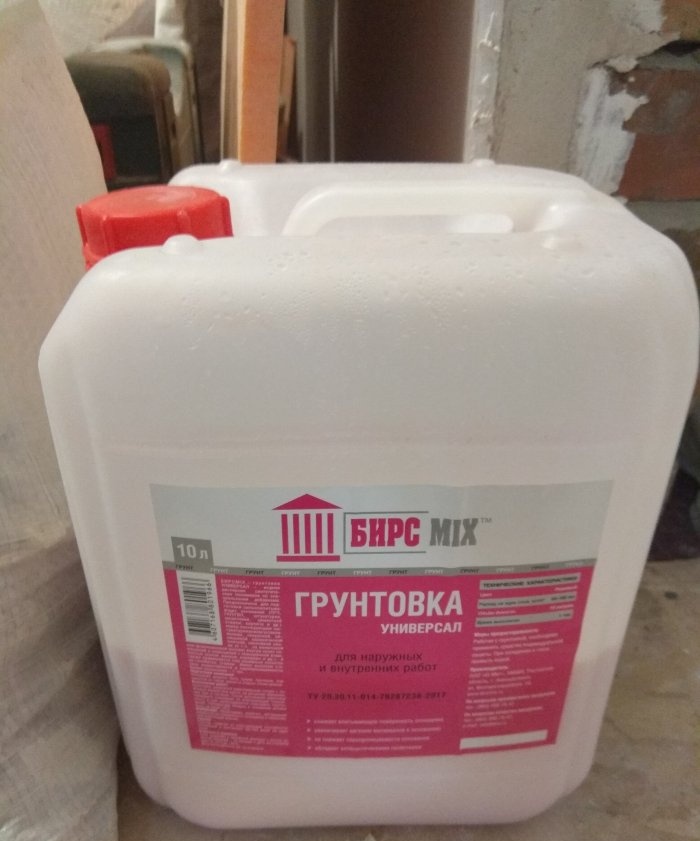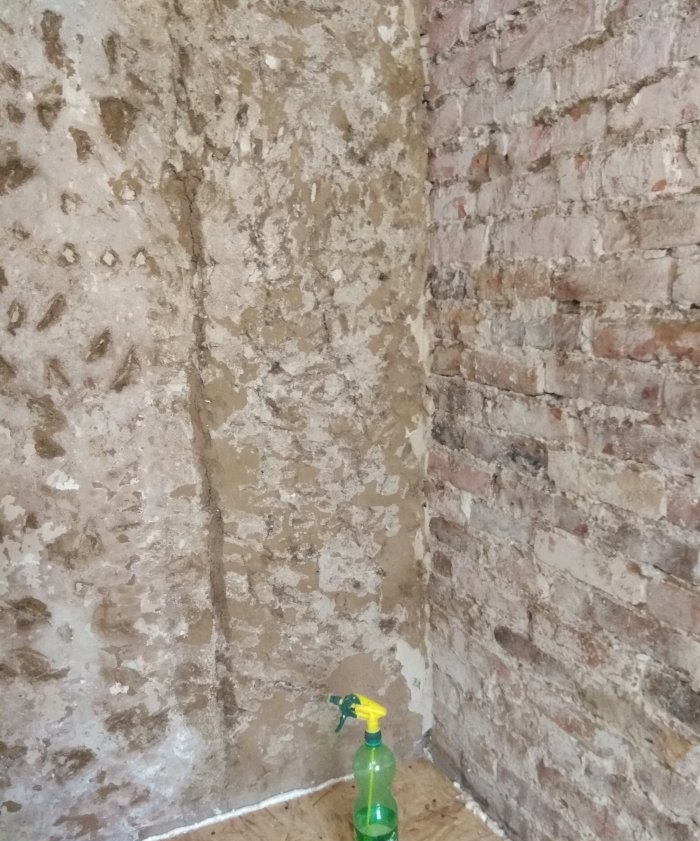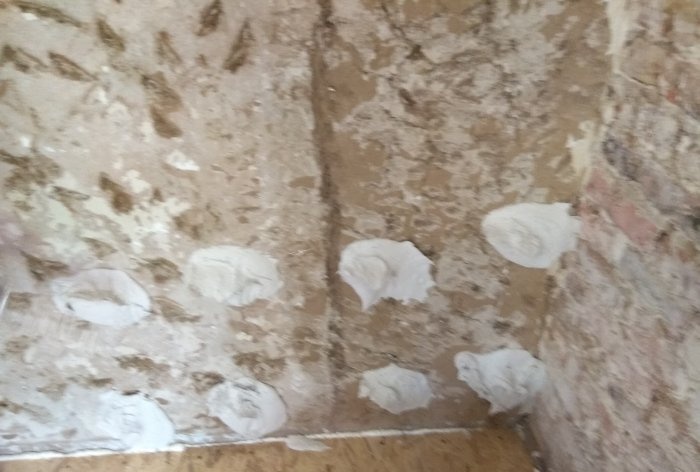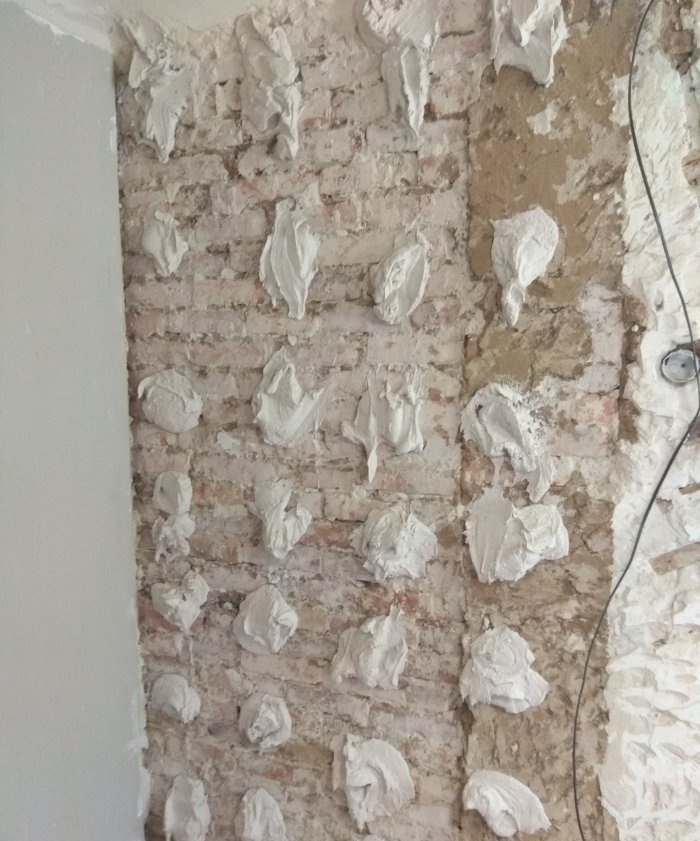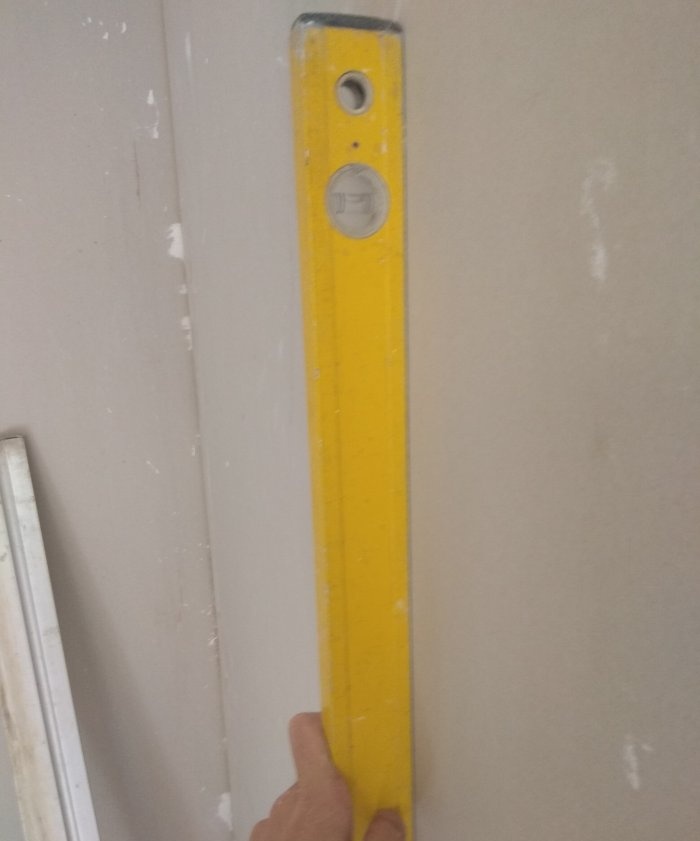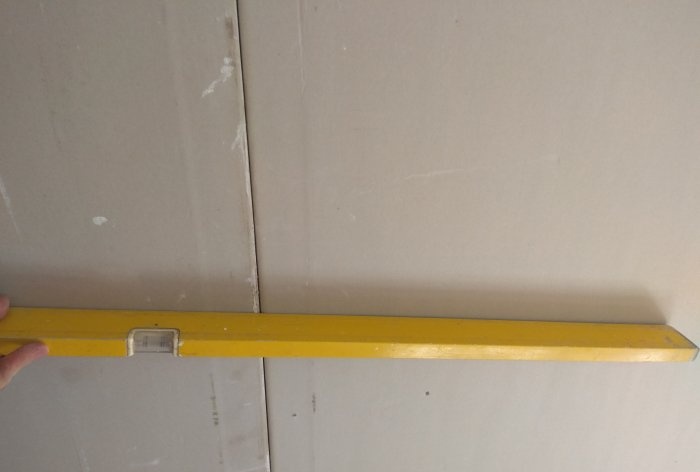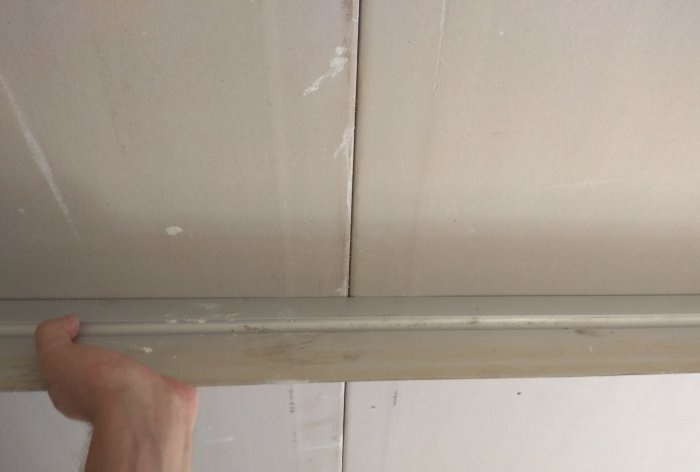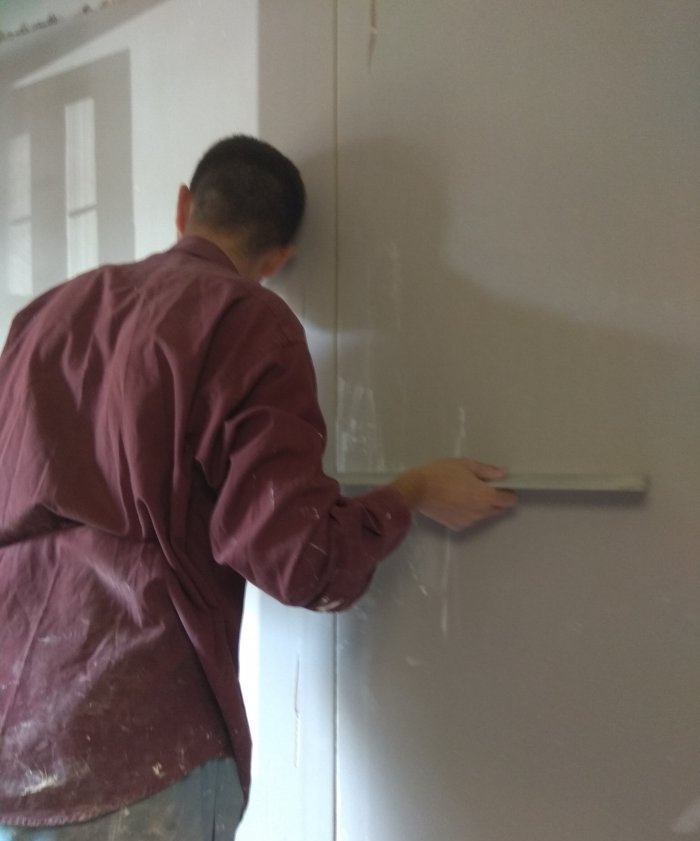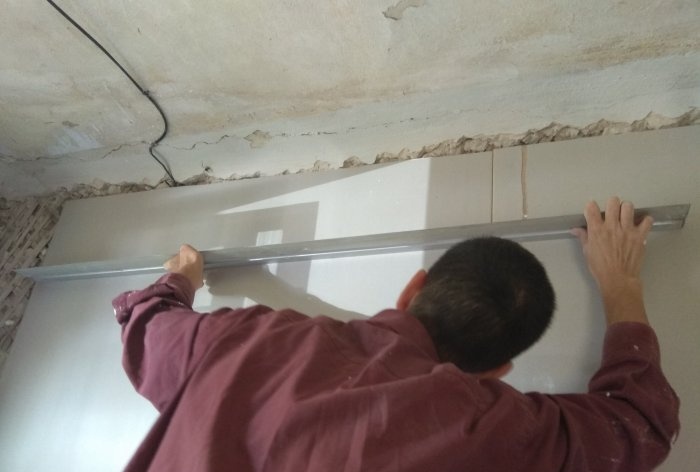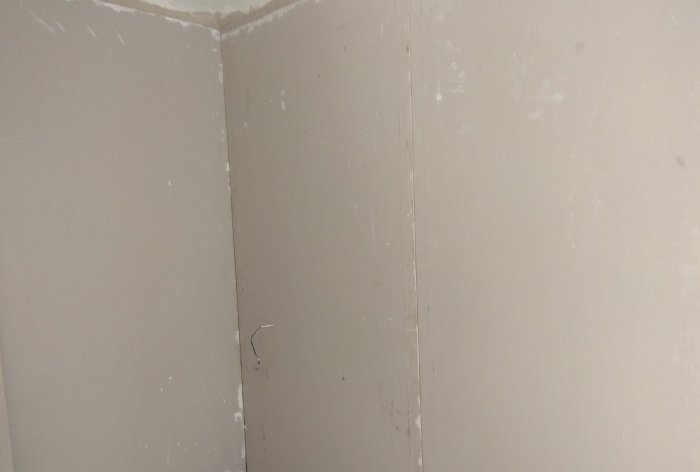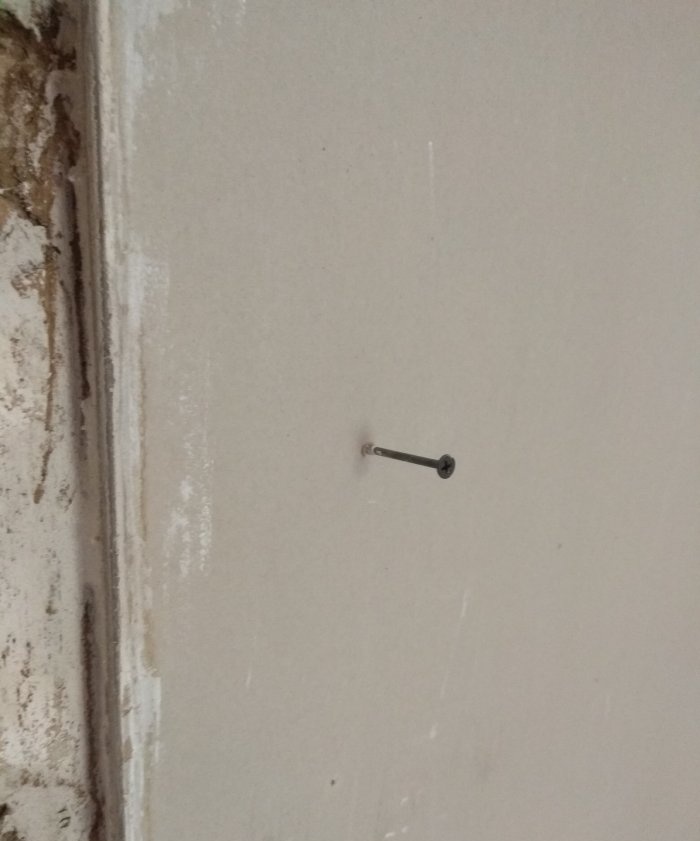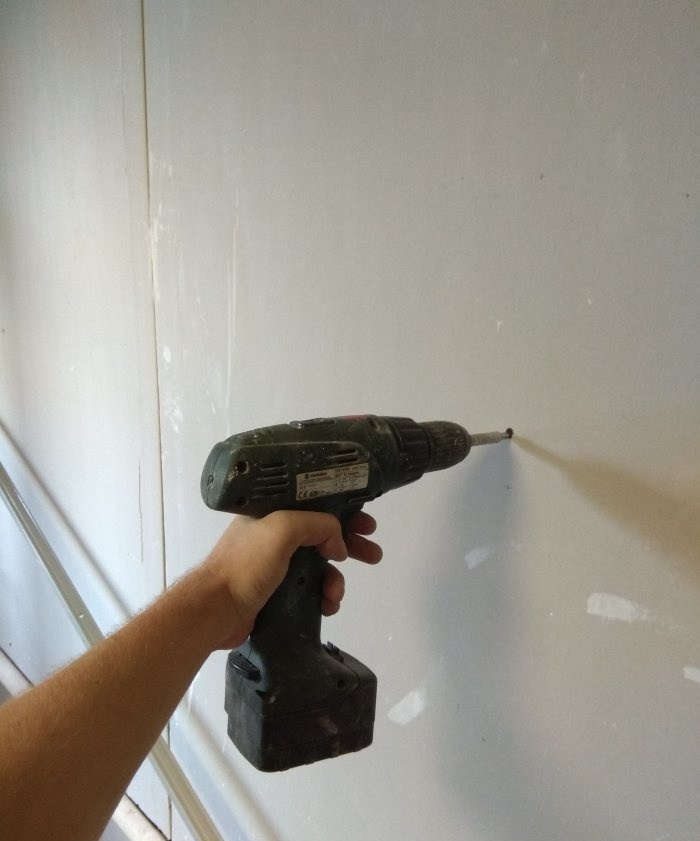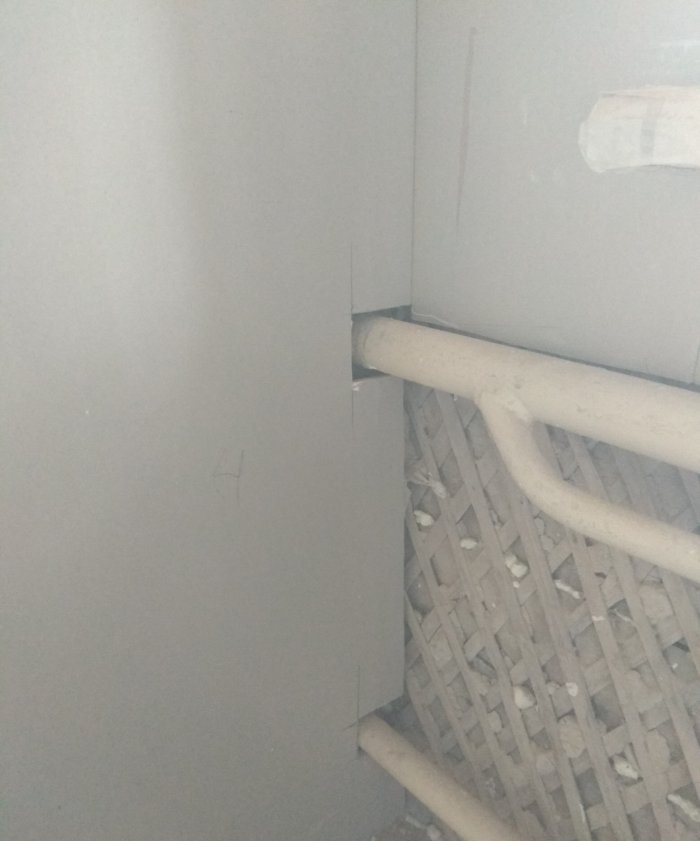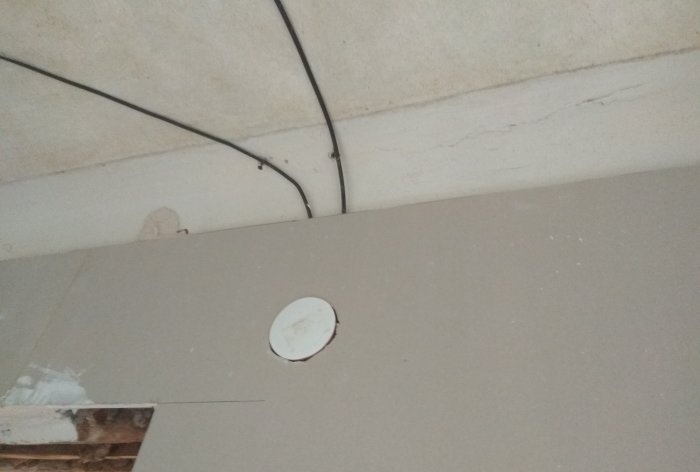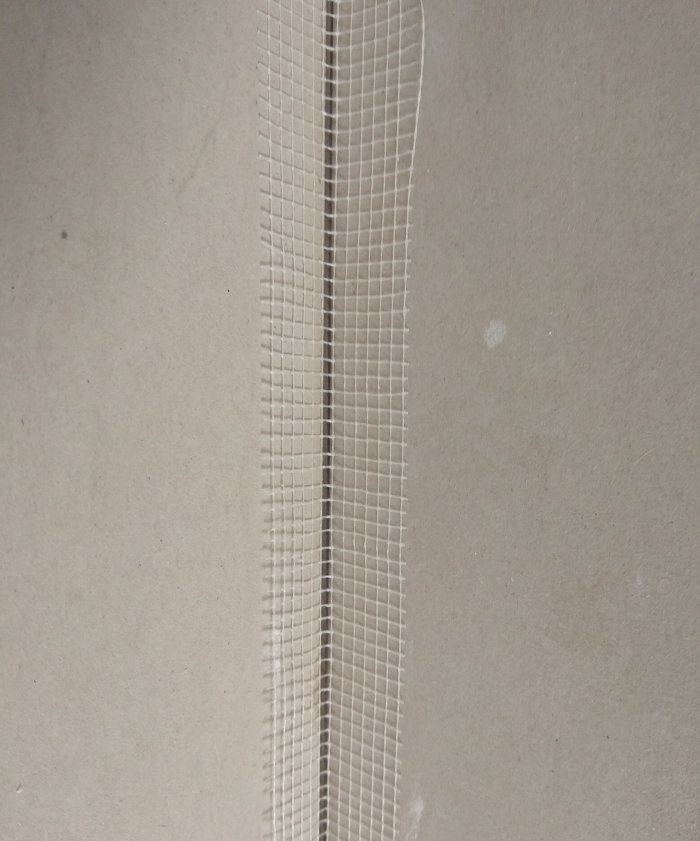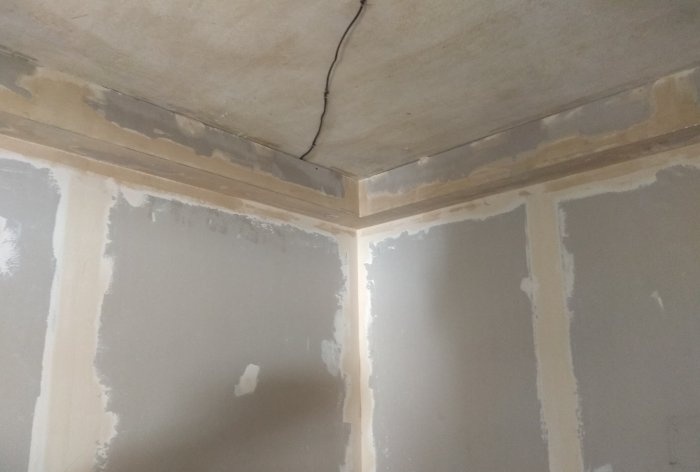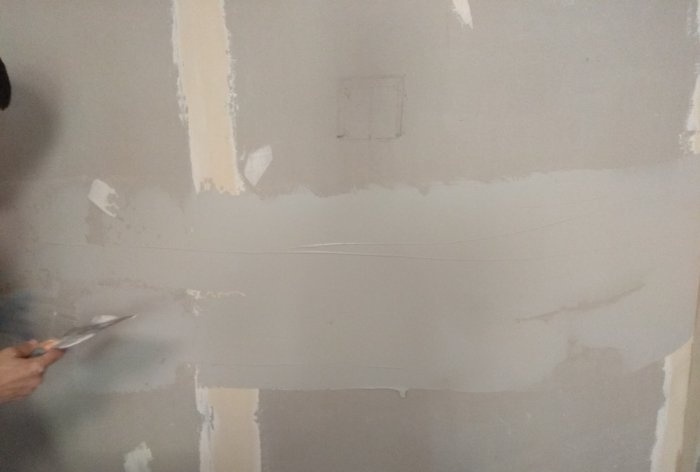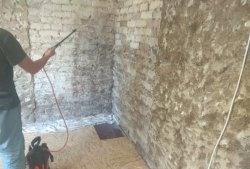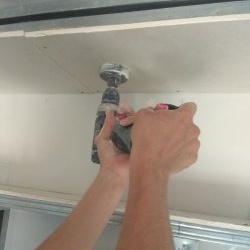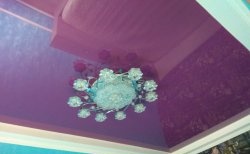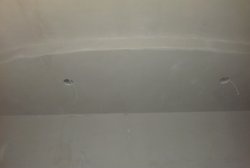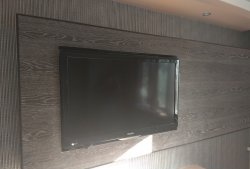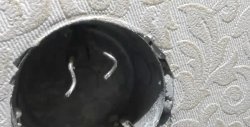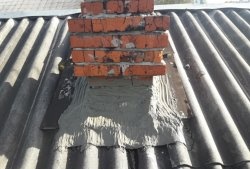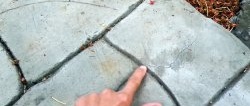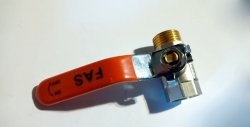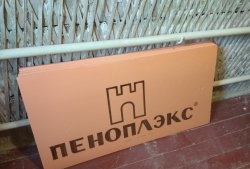So, first you need to calculate the number of sheets of drywall that you will need to finish the walls of the room. To do this, measure the length and height of all the walls of the room with a tape measure, and multiply these indicators. This way you can get the area of the entire room. But to determine the net area, you need to subtract the area occupied by door and window openings.
There are several technologies for installing drywall sheets. For example, fastening to a metal profile that is installed to the wall is often used. In this article we will look at another option - attaching drywall directly to glue. This option is ideal for walls that have slight unevenness.The example in the illustration shows relatively flat walls. This is an adobe house with wooden slats. If the walls are made of brick, you can additionally secure a metal mesh before installing drywall.
Installation of drywall to the wall
Be sure to prime the walls before work.
This is important so that the glue adheres well to the wall, since dust will repel it. You can prime with a brush or spray.
After this, the height of the wall is measured, and if the sheet of drywall is longer, then it must be cut. This is convenient to do with a construction knife. Next, mix the glue in the bucket. What proportions of glue and water can you read on the packaging. You shouldn't make the glue too thick, it's better to make it a little thinner. Since one batch in a regular bucket is most likely not enough for you, you will have to make two batches for one sheet. Mix the glue thoroughly using a mixer.
After you have mixed the glue, use a spatula or trowel to spread it over the wall. If the glue is runny, it will stick to the wall easily.
Then lean a sheet of drywall and, tapping on it, level it with a building level. It is better to use a longer level to more accurately level the walls. First, align the sheet vertically. Then lean the level or long rule horizontally against the drywall and make sure there are no gaps.
Then you can additionally secure the drywall with self-tapping screws, approximately 6 - 10 per sheet.
Next, proceed to install the next sheet. Everything is done the same way. When the second sheet of drywall is installed, you also measure the vertical level, and then check the horizontal level along with the previous sheet.
In addition, in some places you will need to cut drywall for pipes, or electrical. This must be done immediately before installing the sheet on the glue. Trimming is done with a construction knife. If you need to drill a hole to run an electrical cable, you can do this with a drill.
Immediately notice how the cable runs under the drywall so that when you tighten the screws, you don’t accidentally hit it.
When you have completely installed the drywall to the wall, seal all the seams between the sheets, as well as in the upper part between the drywall and the ceiling. To do this, you can use a special self-adhesive mesh (serpyanka). After gluing it, fill all the seams with a special putty for seams.
When the putty has hardened, sand the seams so that they are smooth, then prime all the walls again. Next, you can putty the walls with finishing putty.
You can then either wallpaper or paint this surface.
